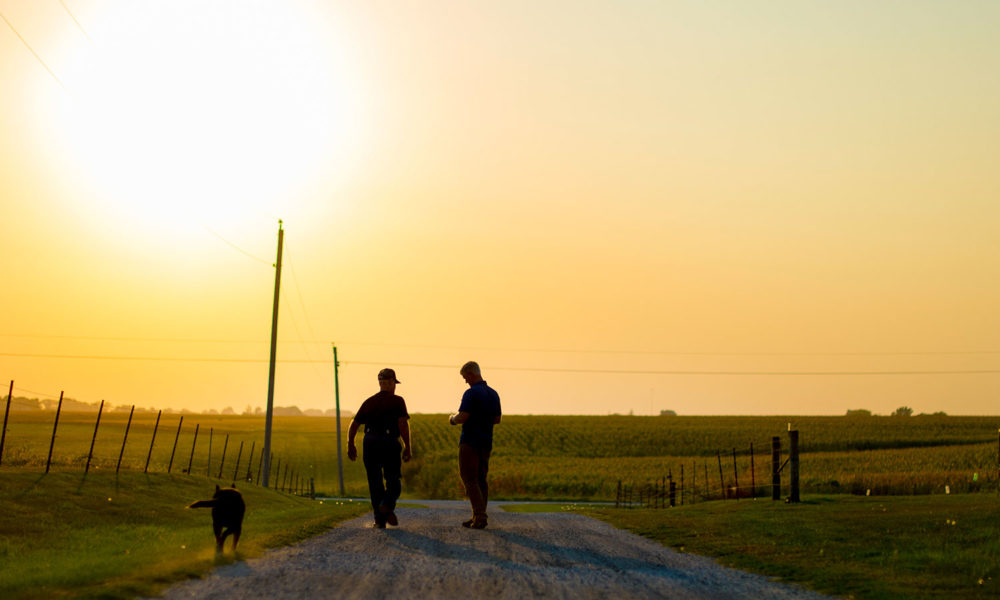America has many stories. In children’s books and classroom texts, the stories we tell of our collective experience vary widely and yet still, somehow, coexist. There are stories of genuine opportunity and of great success that inspire us. And there are also stories of senseless tragedy and systemic oppression which urgently demand attention and action. Throughout our shared history, a defining thread running throughout these stories has been resilience: the ability to withstand setbacks and keep moving forward.
Perhaps more than any other profession, farming demands resilience—to weather, pests, and shifting markets. Still, resilience has been almost completely absent from our collective approach to federal farm policy. But that’s about to change.
The Agriculture Resilience Act (ARA), introduced this week by Congresswoman Chellie Pingree (D-ME-1), seeks to transform our food and agriculture system into one that can confidently face an uncertain climate future while safeguarding livelihoods and the future of our food.
But before I go any further, a reminder: the climate is changing due to human activity, and it’s wreaking havoc on agriculture. Last year was a year of climate extremes, particularly in the Midwest where tens of millions of acres flooded. Globally, 2019 was the second hottest year on record while the last six years are our world’s hottest ever recorded.
Not only are farmers being squeezed by extreme weather, it’s also costing taxpayers money. As my colleague Marcia DeLonge wrote last year:
In September 2019, the US Department of Agriculture (USDA) announced a disaster relief package worth over $3 billion to help US farmers recover from crop and milk losses caused by extreme weather from 2018 to 2019. The package covered both damaged crops and “prevented planting” (cases where weather extremes kept farmers from planting crops in the first place), but only represented a subset of recent costs for weather-related farm damages. For example, in July 2019, the USDA’s Natural Resources Conservation Service announced over $200 million to fund conservation easements for lands damaged by flooding. And these federal relief programs are in addition to others, including the safety net provided by the Federal Crop Insurance Program.
Clearly, there’s no silver bullet that can solve the increasingly costly climate crisis, but research has shown that there are many different pathways to building a resilient agricultural system for farmers and the future of our food.
Enter the ARA (HR 5861). The expansive 171-page bill lays out an evidence-based roadmap for supporting farmers and ranchers amidst a changing climate and increasingly extreme weather. The ARA would dramatically increase support for proven, but underfunded USDA conservation and research programs and create new initiatives to address myriad overlooked issues, including declining soil health, the ability of farms to capture carbon, on-farm renewable energy and food waste. The bill also would quadruple investments in federal food and agriculture research and for programs that provide farmers with information and technical assistance, with emphasis on agroecology, which we’ve shown has been severely underfunded.
First and foremost, the bill recognizes the growing nationwide enthusiasm for soil health by creating a new grant program that would enable the USDA to assist state-level projects that build soil health.
Elsewhere, the ARA makes improvements to nationally prominent conservation programs, such as the Environmental Quality Incentives Program and the particularly cost-effective Conservation Stewardship Program, to align programmatic incentives with agricultural practices that can more effectively deliver environmental outcomes while promoting climate adaptation and mitigation. It also dramatically increases funding for these programs—which impact millions of acres of farmland—in order to ensure that our response to climate change is commensurate with the crisis at hand.
The climate crisis also requires a major investment in publicly funded food and agriculture research. USDA’s current investments in research provides farmers and ranchers with the information they need to adapt to climate change. However, the agency’s premier competitive research program–the Agriculture and Food Research Initiative (AFRI)–bafflingly lacks dedicated funding for climate-specific research. The ARA would change that by adding a new priority area to AFRI that would focus entirely on climate change adaptation and mitigation. The ARA would also invest in two nationwide research and technical assistance networks–the USDA Climate Hubs and the Long-Term Agroecosystem Research network–to ensure the future success of farmers, ranchers, and agriculture in every part of the country.
Finally, the ARA also weighs in on the ongoing discussion of whether—and how—to reward farmers for environmental services, such as improvements to soil, water, and air quality, and even potentially rewarding carbon sequestration. The bill directs the USDA and Treasury Department to study the feasibility of a federal income tax credit that would provide an incentive for farms to capture carbon in their soil. It also directs the USDA to establish science-based criteria to ensure all new incentives produce the best possible environmental outcomes. While farmers are undoubtedly partners in the climate solution, it’s essential that any new incentive for farmers hold up against most withering scientific scrutiny by demonstrating the environmental benefit of new payments.
The beauty of stories is that there are always new ones to write. And while the brief summaries above hardly do the scope of the ARA justice, they represent some of the key provisions of an important piece of the overall climate conversation. If implemented, these provisions will help redefine and reinvent the story of agriculture in this country, putting us on a path toward a more successful, equitable, and sustainable future.

